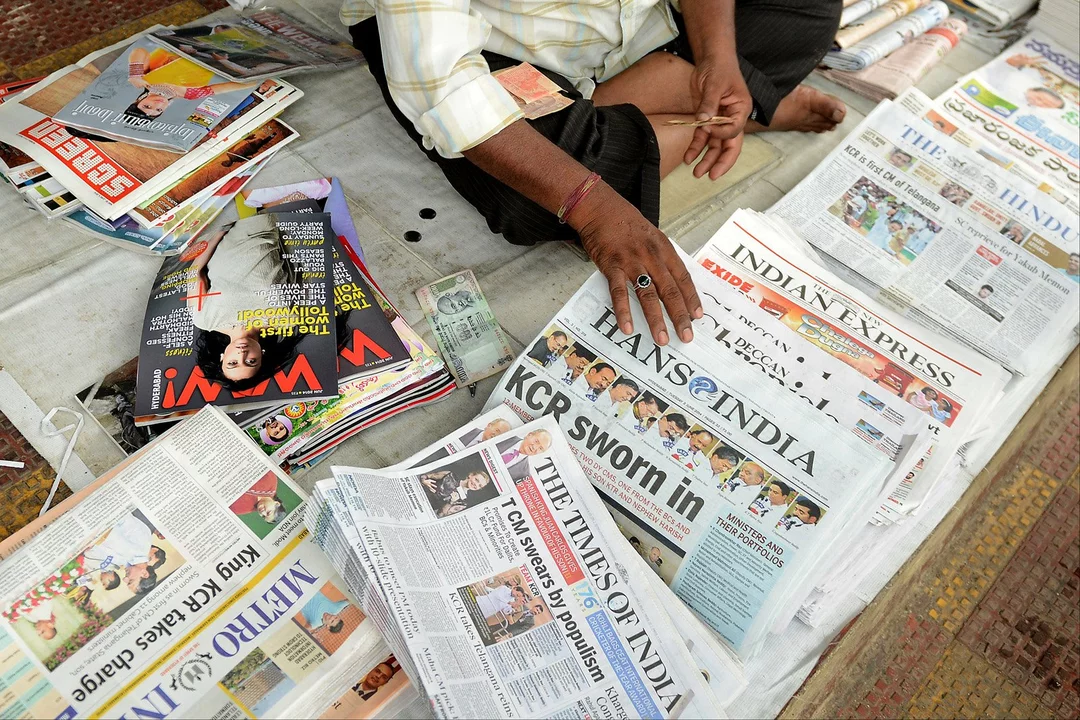
Introduction: The Issue of Media Bias in India
In recent years, there has been growing concern about the objectivity and fairness of news channels in India. Many believe that these channels are biased, pushing particular political or economic agendas at the expense of balanced reporting. In this article, we'll explore the issue of media bias in India by examining five key aspects of the problem. We'll look at the ownership structure of Indian news channels, the role of advertising, the influence of political parties, the phenomenon of sensationalism, and finally, the impact of social media.
Ownership: The Power Behind the News
One of the main factors contributing to the bias in Indian news channels is the ownership structure. A large number of media organizations are owned by corporations or individuals with strong political connections, which can lead to biased reporting to favor their interests. In some cases, media owners may even have direct stakes in the businesses they report on, creating a clear conflict of interest.
Moreover, the concentration of media ownership in the hands of a few powerful individuals or corporations can limit the diversity of viewpoints presented to viewers. This can result in a biased representation of news, which may not accurately reflect the reality of a situation or the opinions of the general public.
Advertising: The Fuel for Biased Reporting
Advertising plays a significant role in shaping the content of Indian news channels. As these channels are heavily reliant on advertising revenue, they may be more likely to cater to the interests of their advertisers, rather than providing impartial news coverage. This can lead to a focus on stories that are more likely to attract viewers and, therefore, advertisers, even if those stories are not the most important or newsworthy.
In some cases, advertisers may even exert direct influence over the content of news programs, either by requesting certain stories be covered or by withdrawing advertising from channels that publish unfavorable content. This can create a situation where news channels prioritize the interests of their advertisers over the public interest, leading to biased reporting.
Political Influence: A Tool for Manipulation
Political parties and politicians often have significant sway over Indian news channels, both directly and indirectly. Direct influence can take the form of political appointments to key positions within media organizations, or through the ownership of media outlets by politicians themselves. This can lead to biased reporting that favors a particular party, candidate, or policy.
Indirect political influence can occur through the allocation of government advertising, which is a major source of revenue for many Indian news channels. By selectively distributing advertising contracts, political parties can reward friendly media outlets and punish those that present critical or unfavorable coverage. This can create a chilling effect on independent journalism and contribute to biased reporting.
Sensationalism: The Race for Ratings
Indian news channels are often criticized for their sensationalist approach to reporting, focusing on scandal, controversy, and human interest stories rather than substantive issues. This is driven, in part, by the competitive nature of the media landscape, as channels vie for ratings and advertising revenue. To attract viewers, news organizations may prioritize sensational stories, even if they are not the most important or newsworthy, which can contribute to biased reporting.
Furthermore, the emphasis on sensationalism can lead to a lack of depth and analysis in news coverage, as stories are often reduced to sound bites and headlines. This can create a distorted picture of events, with viewers receiving only a superficial understanding of the issues at hand, rather than a balanced and informed perspective.
Social Media: A Double-Edged Sword
While social media platforms have provided a space for alternative viewpoints and independent journalism, they have also contributed to the problem of media bias in India. News channels often rely on social media for content, picking up stories that are trending or have gone viral. This can lead to biased coverage, as stories that generate the most attention and controversy on social media may not be the most important or newsworthy.
Moreover, social media platforms can be easily manipulated by political actors, who may use them to amplify their messages or spread misinformation. As news channels increasingly turn to social media for content, they may inadvertently become vehicles for political propaganda, further contributing to biased reporting.
In conclusion, there are multiple factors that contribute to the perception of bias in Indian news channels. To address this issue, it is crucial for media organizations to prioritize transparency and accountability, while also ensuring that they provide a diverse range of perspectives and balanced coverage of the news. Only then can we hope for a more objective and fair media landscape in India.